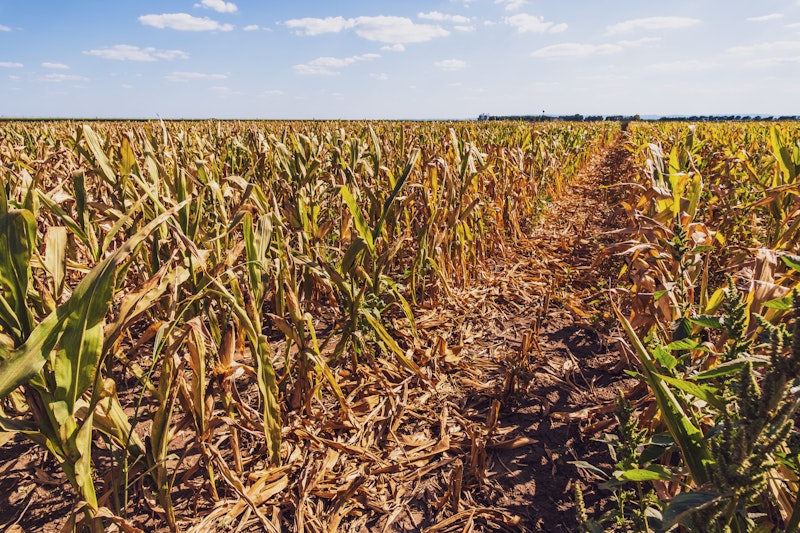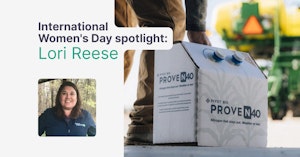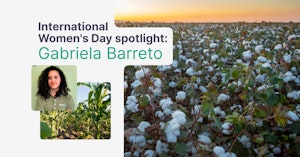With climate change widely expected to cause incrementally more damage to agriculture in the future, the risk of crop insurance becoming too expensive and farmers not being able to afford protection for their crops is high. This will cause food prices to rise or force governments to increase subsidies, while also endangering the global food production and security.
Already now, 61% of crop insurance payouts in the U.S. are climate change-related, having cost American taxpayers $87.6 billion since 1995, and over the last 25 years insurance payments to farmers for crop losses due to drought and flooding have increased threefold. Crop insurance is clearly an important ‘tool’ for producers to minimize their exposure to climate related events and the resulting financial loss; with continuing climate change expected to cause more droughts, floods and other extreme weather events in future, the importance of crop insurance will continue to increase.
Crop insurance offers producers financial protection against losses due to adverse events including drought, excess moisture, damaging freezes, hail, wind, disease, and price fluctuations. The availability of a specific type of insurance depends per country: some countries, like the U.S., have a federal program where other countries only have private sector initiatives. Crop insurance offers producers protection against financial losses and gives them the confidence to grow crops and when they otherwise might not, thus enhancing the total amount of crops produced.

While we cannot change the climate, solutions for crop insurance are being worked on, and they all have one thing in common: they are data driven! I speak to crop insurance companies daily, and these are the reasons they tell me they partner with Leaf to create these solutions:
1. Differentiating insurance products
Some might say that insurance companies are ‘boring’, but I would argue that they’re often some of the most innovative companies in our industry. With basic crop insurance products, especially in the USA, very similar across providers, these businesses have a strong drive to innovate in order to differentiate. Instead of just offering federally-sponsored Agricultural Risk Coverage (ARC) and Price Loss Coverage (PLC), providers are starting to offer additional coverage that are data-driven.
A good example is private replant coverage. Insurance providers are able to analyze high-resolution satellite data at scale to see when an area historically plants, and cross-reference that with historic claims. Based on this data, they are then able to offer private replant coverage that covers producers that have planted a specified number of days ahead of the county's initial plant date. Without high-resolution satellite data, insurance providers are unable to estimate the risk and premiums will then become unaffordable.
Parametric insurance, also called index-based insurance, is an insurance product that offers pre-specified payouts based upon a trigger event. This type of insurance has been common in other industries such as mining for a number of years already, but is relatively new for agriculture. Growers are able to insure for any number of different parameters such as rainfall totals, max wind speed, whether hail occurred or many others - all within a specified time frame. When the weather event happens it triggers the agreed-upon payout, and so it’s a very binary proposition. Without a need to wait for claims and assessments, producers can now be reimbursed with the click of a button.
Insurance providers offering this type of insurance have the clear need for data: high-resolution satellite data and accurate weather data with historic data available as comparison. With this data, insurance providers are able to accurately calculate insurance premiums, and producers are able to objectively see whether a weather event has occurred as per the insurance policy. This is a great example of using data to create cheaper and more tailored insurance policies based on exposure instead of outcomes.

2. Improving growers’ experience
Growers’ interactions with insurance providers can be difficult and time-consuming, with a multitude of forms to be submitted throughout the year, at specific times and with a lot of detailed information. In a world increasingly dominated by simplified provider-customer interactions through apps and websites, customers have come to expect a high standard for digital interactions with their service providers, and insurance providers cannot afford to stay behind.
Insurance providers who create connected applications where grower-specific information is pre-filled with field level information, are able to offer their customers a seamless experience while minimizing errors due to manual data-entry. Field boundary information, operations data and automated detection algorithms combined with high-resolution satellite data are all ready to be used in this context and form a great option for insurance providers to create an industry-leading client experience.
3. Better estimating risks and policy costs
Insurance providers offer a number of supplemental packages that producers can add to their Multi Peril Crop Insurance (MPCI). Products such as Revenue Accelerator Max Protection (RAMP), Increased Coverage Election (ICE) and others like them, all focus on offering yield loss and revenue protection. As with any insurance product however, the more accurately an insurance provider is able to calculate their risk, the more accurate the insurance premium will be.
Insurance providers that are able to ingest producers’ operations data from past years and combine it with historic weather data and historic satellite imagery, are able to create powerful models that can identify risks and premium levels with pinpoint accuracy. Producers are able to get a better return on coverage versus extra premiums, and insurance providers are able to expand their business through their unique offering. A win for everyone involved and the ability to step away from the traditional zero-sum game.
Quite often the only reason why an insurance provider isn’t using operations, weather or satellite data yet, is that it is perceived as ‘too difficult’ to obtain and use this data, which is why I’m so excited about the role that Leaf plays to help the industry move forward. I personally am excited to see the many ways in which crop insurers will be using data in years to come, and I look forward to helping them unlock new value through Leaf’s unified farm data API. If you’re interested to learn more, please get in touch; I look forward to having a chat!





